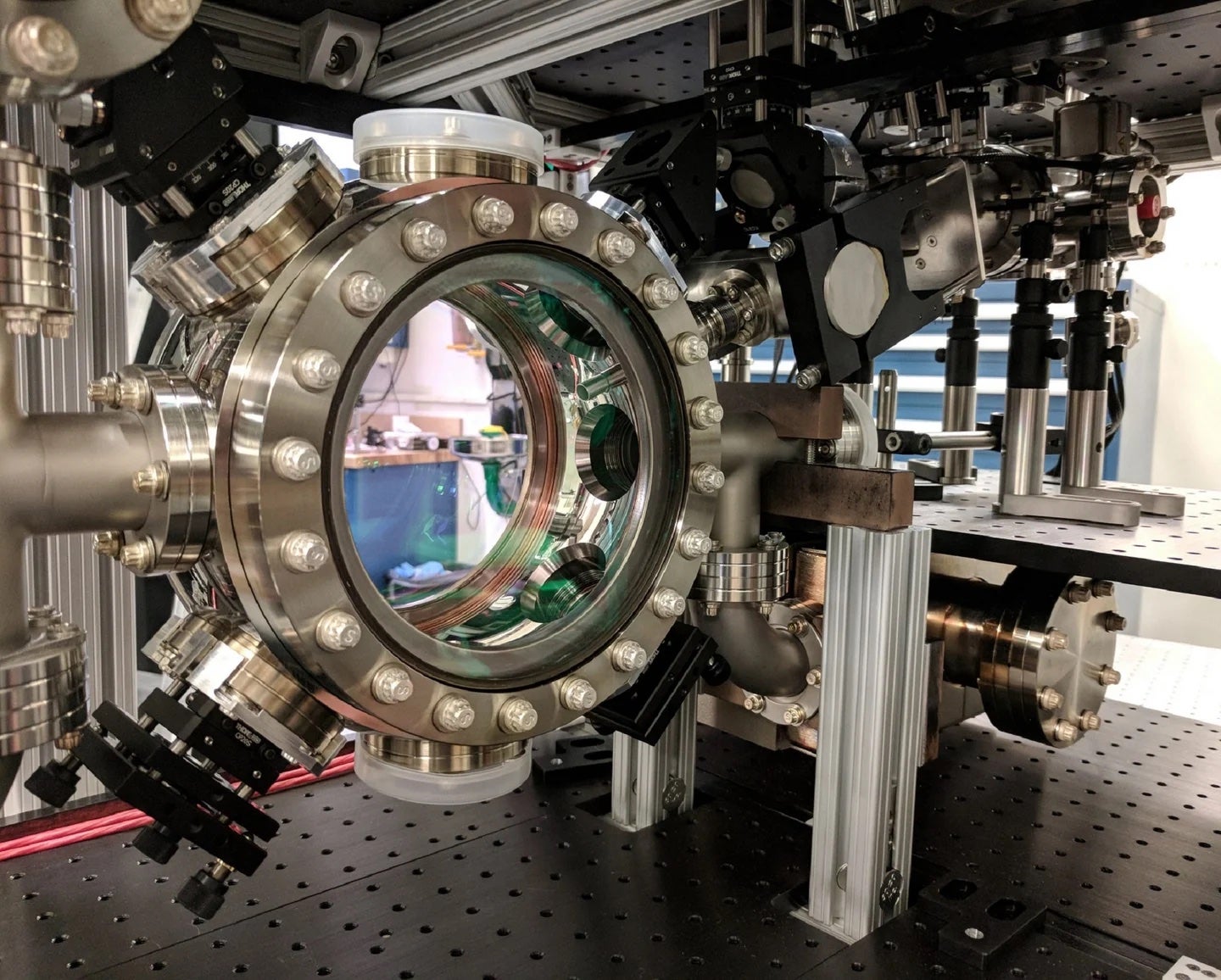
Previously, scientists were relying on smartphone-quality cameras to study the elusive material that makes up much of the universe.
The post A dark matter camera will soon allow scientists to peer into atomic clouds appeared first on Popular Photography.
]]>
This story originally appeared on Popular Science.
In suburban Chicago, about 34 miles west of Lake Michigan, sits a hole in the ground that goes about 330 feet straight down. Long ago, scientists had the shaft drilled for a particle physics experiment that’s long vanished from this world. Now, in a few short years, they will reuse the shaft for a new project with the mystical name MAGIS-100.
When MAGIS-100 is complete, physicists plan to use it for detecting hidden treasures: dark matter, the mysterious invisible something that’s thought to make up much of the universe; and gravitational waves, ripples in space-time caused by cosmic shocks like black holes collisions. They hope to find traces of those elusive phenomena by watching the quantum signatures they leave behind on raindrop-sized clouds of strontium atoms.
But actually observing those atoms is trickier than you might expect. To pull off similar experiments, physicists have so far relied on cameras comparable to the ones on a smartphone. And while the technology might work fine for a sunset or a tasty-looking food shot, it limits what physicists can see on the atomic level.
Related: This may be the highest-resolution microscope we’ll ever get
Stanford-developed dark matter camera makes the most of mirrors
Fortunately, some physicists may have an upgrade. A research team from different groups in Stanford, California, has created a unique camera contraption that relies on a dome of mirrors. The extra reflections help them to see what light is entering the lens, and tell what angle a certain patch of light is coming from. That, they hope, will let them peer into an atom cloud like never before.
Your mobile phone camera or DSLR doesn’t care where light travels from: It captures the intensity of the photons and the colors reflected by the wavelengths, little more. For taking photographs of your family, a city skyline, or the Grand Canyon, that’s all well and good. But for studying atoms, it leaves quite a bit to be desired. “You’re throwing away a lot of light,” says Murtaza Safdari, a physics graduate student at Stanford University and one of the creators.
Physicists want to preserve that information because it lets them paint a more complex, 3D picture of the object (or objects) they’re studying. And when it comes to the finicky analyses physicists like to do, the more information they can get in one shot, the quicker and better.
One way to get that information is to set up multiple cameras, allowing them to snap pictures from multiple angles and stitch them together for a more detailed view. That can work great with, say, five cameras. But some physics experiments require such precise measurements that even a thousand cameras might not do the trick.
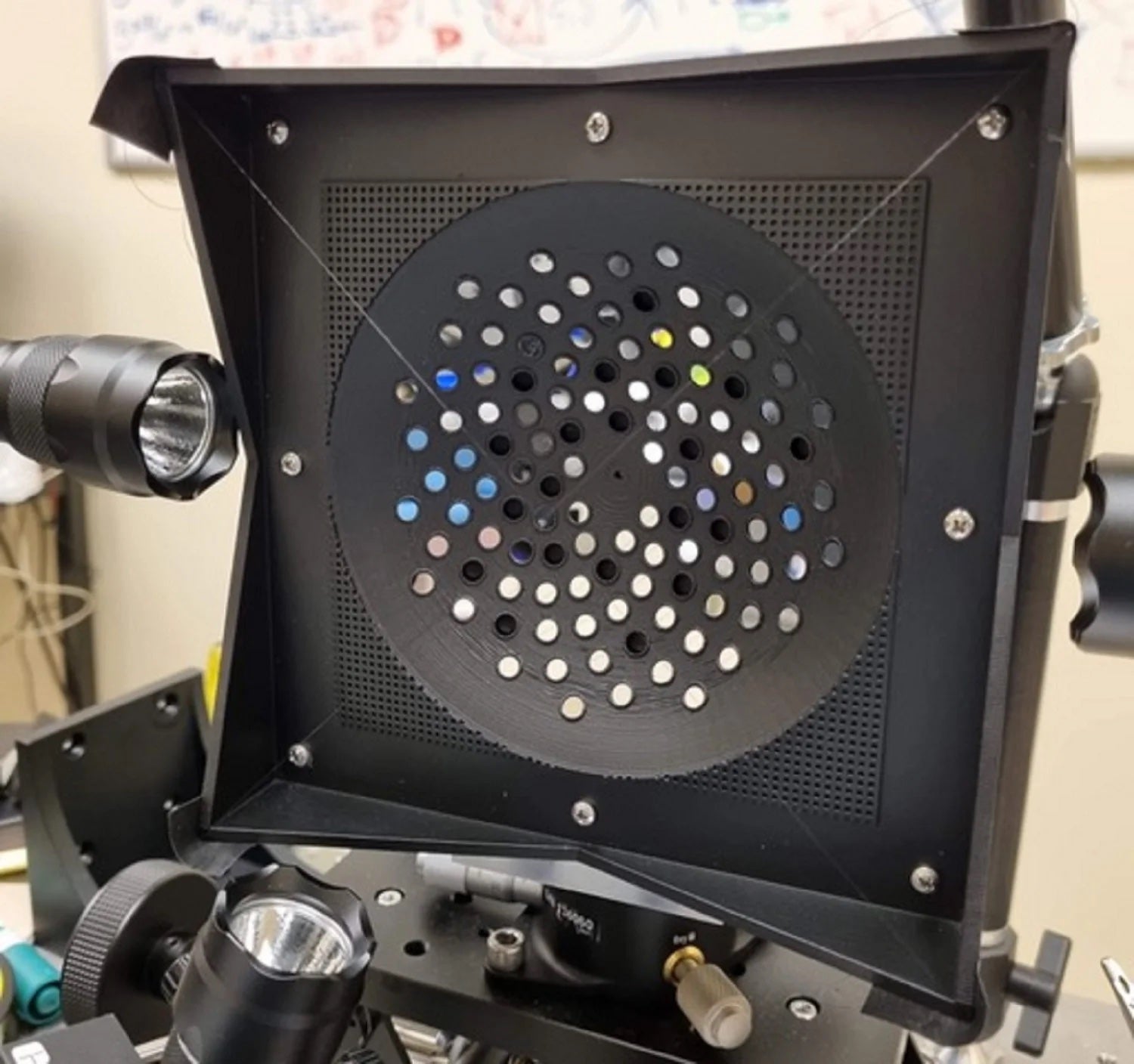
So, in a Stanford basement, researchers decided to set out on making their own system to get around that problem. “Our thinking…was basically: Can we try and completely capture as much information as we can, and can we preserve directional information?” says Safdari.
Their resulting prototype—made from off-the-shelf and 3D-printed components—looks like a shallow dome, spangled with an array of little mirror-like dots on the inside. The pattern seems to form a fun optical illusion of concentric circles, but it’s carefully calculated to maximize the light striking the camera.
How the dark matter camera works
For the MAGIS-100 project, the subject of the shot—the cloud of strontium atoms—would sit within the dome. A brief light flash from an external laser beam would then scatter off the mirror-dots and through the cloud at a myriad angles. The lens would pick up the resulting reflections, how they’ve interacted with the molecules, and which dots they’ve bounced off.
Then, from that information, machine learning algorithms can piece the three-dimensional structure of the cloud back together. Currently, this reconstruction takes many seconds; in an ideal world, it would take milliseconds, or even less. But, like the algorithms used to trainy self-driving cars to adjust to the surrounding world, researchers think their computer codes’ performance will improve.
While the creators haven’t gotten around to testing the camera on atoms just yet, they did try it out by scanning some suitably sized sample parts: 3D-printed letter-shaped pieces the size of the strontium droplets they intend to use. The photo they took was so clear, they could find defects where the little letters D, O, and E varied from their intended design.
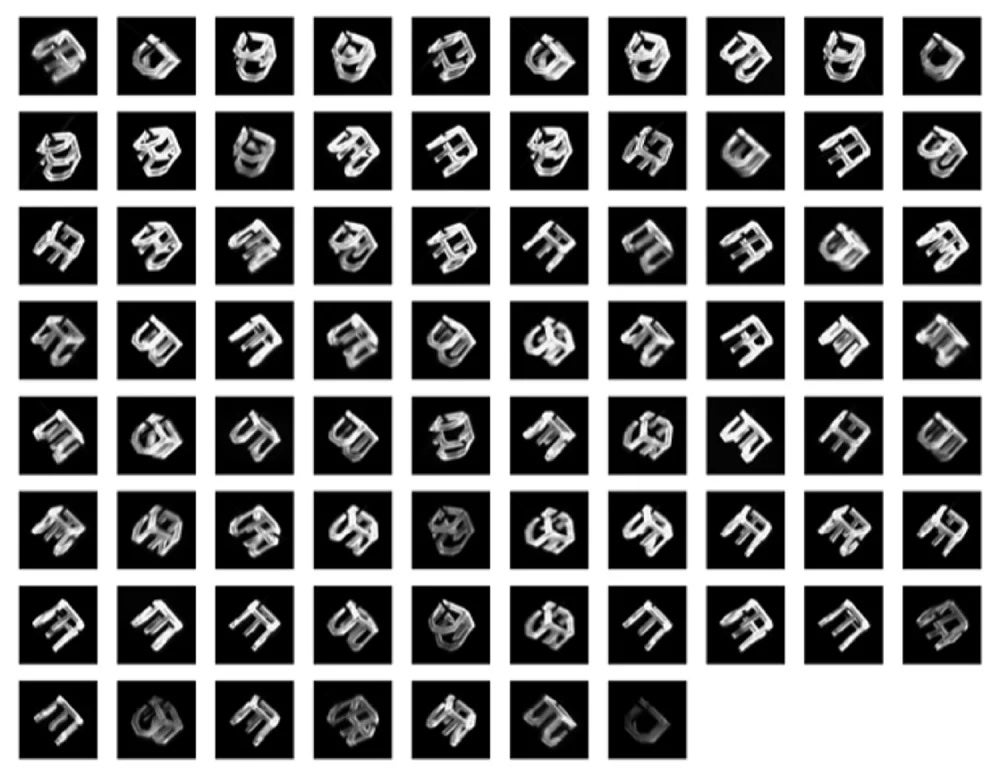
For atom experiments like MAGIS-100, this equipment is distinct from anything else on the market. “The state of the art are just cameras, commercial cameras, and lenses,” says Ariel Schwartzman, a physicist at SLAC National Accelerator Laboratory in California and co-creator of the Stanford setup. They scoured photo-equipment catalogs for something that could see into an atom cloud from multiple angles at once. “Nothing was available,” says Schwartzman.
What’s next for the dark matter camera
Complicating matters is that many experiments require atoms to rest in extremely cold temperatures, barely above absolute zero. This means they require low-light conditions—shining any bright light source for too long could heat them up too fast. Setting a longer exposure time on a camera could help, but it also means sacrificing some of the detail and information needed in the final image. “You are allowing the atom cloud to diffuse,” says Sanha Cheong, a physics graduate student at Stanford University and member of the camera-building crew. The mirror dome, on the other hand, aims to use only a brief laser-flash with an exposure of microseconds.
Related: DIYer 3D-prints a working 35mm movie camera
The creators’ next challenge is to actually place the camera in MAGIS-100, which will take a lot of tinkering to fit the camera to a much larger shaft and in a vacuum. But physicists are hopeful: A camera like this might go a lot further than detecting obscure effects around atoms. Its designers plan to use it for everything from tracking particles in plasma to measuring quality control of small parts in the factory.
“To be able to capture as much light and information in a single shot in the shortest exposure possible—it opens up new doors,” says Cheong.
The post A dark matter camera will soon allow scientists to peer into atomic clouds appeared first on Popular Photography.
Articles may contain affiliate links which enable us to share in the revenue of any purchases made.
]]>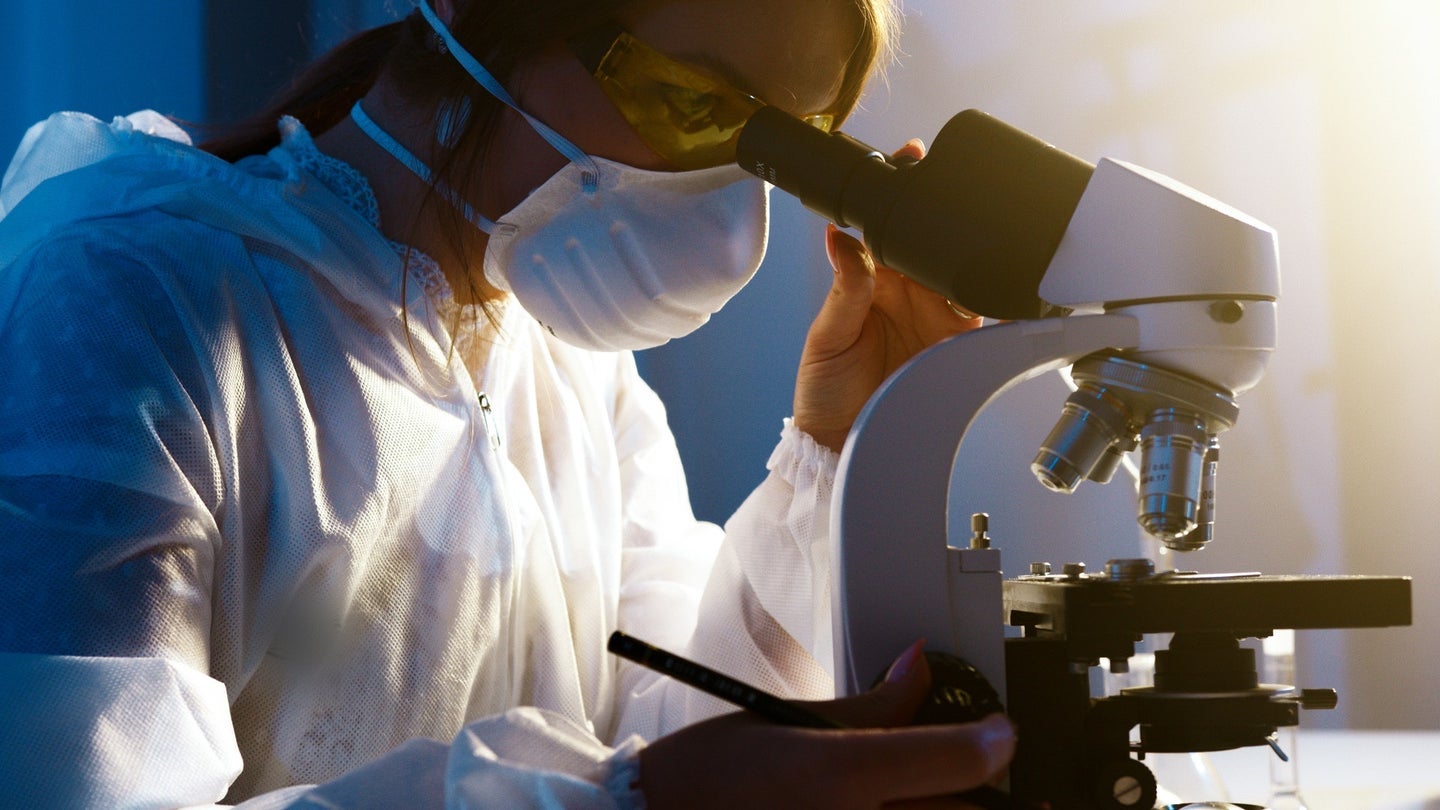
Scientists can see individual atoms clearer than ever before, but they might be nearing their journey’s end.
The post This may be the highest resolution microscope we’ll ever get appeared first on Popular Photography.
]]>
This story originally featured on Popular Science.
A journey that began nearly a century ago, when scientists invented the first electron microscope, has taken yet another step.
A group of physicists have leapt even closer to the ultimate limit of how much scientists think objects can be magnified. This group previously held the world record for the highest resolution achieved with a microscope. Their latest work, published in Science, shrinks that record even further.
“This is the highest-resolution imaging in human history,” says David Muller, a physicist at Cornell University and one of the paper’s authors.
You won’t get resolution anywhere near this high with the sort of microscopes that you might have used in school. Those microscopes—like those that Robert Hooke used over 300 years ago to glimpse a hidden world of cells—see light. That means they’re incapable of seeing anything smaller than the wavelength of that light. It’s a hard limit that’s a thousand times too large to think about seeing atoms.
Scientists were already hitting that roadblock in the early 20th century. If you want to go smaller—to enter the world of viruses, for instance, to develop a polio vaccine—you’ll need to see with a medium that has a shorter wavelength than light.
You might turn to electrons, the tiny charged particles that orbit the nucleus of an atom. In the 1930s, scientists like Ernst Ruska began building the first electron microscopes, which can reveal minuscule objects in vivid detail by probing them with electron beams.
[Related: Check out these stunning photomicrography images.]
Electrons have wavelengths some 100,000 times shorter than light. In theory, you can use them to peer into atoms—those fundamental building blocks of all normal matter. But there’s a problem, and it’s not the electrons’ fault. “The lens quality of electron lenses is terrible,” Muller says.
No imaging system is perfect, as many astronomers know well. But the electromagnetic lenses inside electron microscopes are particularly blurry. Looking through a typical electron microscope, according to Muller, is like looking at light through a beer bottle.
One way around this is to attach bits of hardware called “aberration correctors,” which are like prescribing your electron microscope a pair of glasses. But to look at atoms, you’ll need to conduct a symphony of aberration correctors. Imagine a hundred pairs of constantly shifting glasses.
By the 1990s and 2000s, computers had actually made this possible, pushing microscope resolution to new limits. For a time, aberration correctors held the resolution throne. But by the 2010s, the technology was starting to run out of steam.
To keep pushing the limit of microscope resolution, physicists at Cornell took a road less travelled: They did away with lenses completely. Instead, they shot electrons at an object and watched how they scattered.
As those electrons fly, the object’s atoms will throw the bombarding electrons off course, bending them into a pattern on the object’s far side. By shining electrons at an object from multiple positions, you can snap a whole album of patterns. With today’s computers, you can stitch those patterns together to reconstruct a microscopic image of the original object.
It’s called ptychography (tai-KAW-graf-ee). X-ray scientists today commonly use their own version of ptychography, but to electron-watchers, it was a dead end. Scientists had been talking about electron ptychography in theory for half a century, but only in the last half-decade has it really been feasible, according to Yi Jiang, a physicist at Argonne National Laboratory and a co-author on the paper.
For one, scientists didn’t have detectors in the past that were capable of pinpointing where enough of the electrons landed. For another, electrons are especially prone to being thrown off in all sorts of wild directions, even by a single atom. That isn’t easy to account for, even with modern computers. As a result, aberration correctors held an order of magnitude-sized lead over ptychography when it came to the resolution record.
But the Cornell group believed ptychography held promise. By the mid-2010s, they’d developed state-of-the-art electron detectors. To do this, they borrowed algorithms from X-ray scientists. They also simplified the problem by dialling down their electron beam and filing their object down to the smallest thickness possible.
And in 2018, it worked. The Cornell group beat aberration correctors to achieve the highest microscope resolution ever, earning a Guinness World Record for good measure.
[Related: Larger-than-life photos of tiny things.]
Of course, it wasn’t a foolproof method. “All we could do was work with these materials that were just one atom or two atoms thick,” says Muller.
But the group wondered if they could go even smaller. They had the equipment to do it, but they needed their computers to account for electrons’ pesky scattering. Essentially, they needed to force their way through a physics problem that hadn’t been solved in 80 years.
It took the Cornell group three years of tinkering with algorithms—three years of work that Muller says often felt fruitless. But thanks to the work of Cornell postdoc Zhen Chen, they found a way that worked.
The result? They’ve beaten their own world record by twofold.
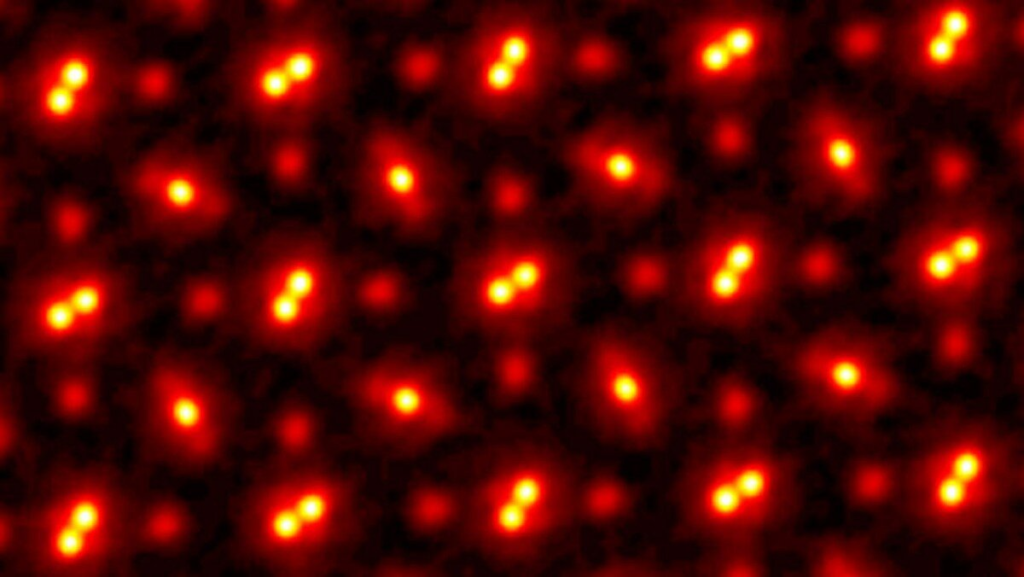
“The paper is a landmark study,” says Matthew Joseph Cherukara, a computational scientist at Argonne National Laboratory who wasn’t involved with the paper. “It is a demonstration of the power of advanced algorithms and computation in breaking and surpassing physical limitations of microscopes.”
Can scientists go even further?
The answer to that is, quite literally, hazy.
Look at the Cornell group’s pictures, and you’ll see that the atoms appear blurry. That isn’t an aberration from the detector or interference from the air. It’s the trembling of the atoms themselves, vibrating in heat. You could cool the atoms down to make them stay in place, but by probing them with electrons, you’re only heating them up again.
So that blur, as far as scientists know, isn’t something they can overcome—unless they find another way of looking at atoms entirely.
“We’re kind of almost at an ultimate limit,” says Muller.
The post This may be the highest resolution microscope we’ll ever get appeared first on Popular Photography.
Articles may contain affiliate links which enable us to share in the revenue of any purchases made.
]]>